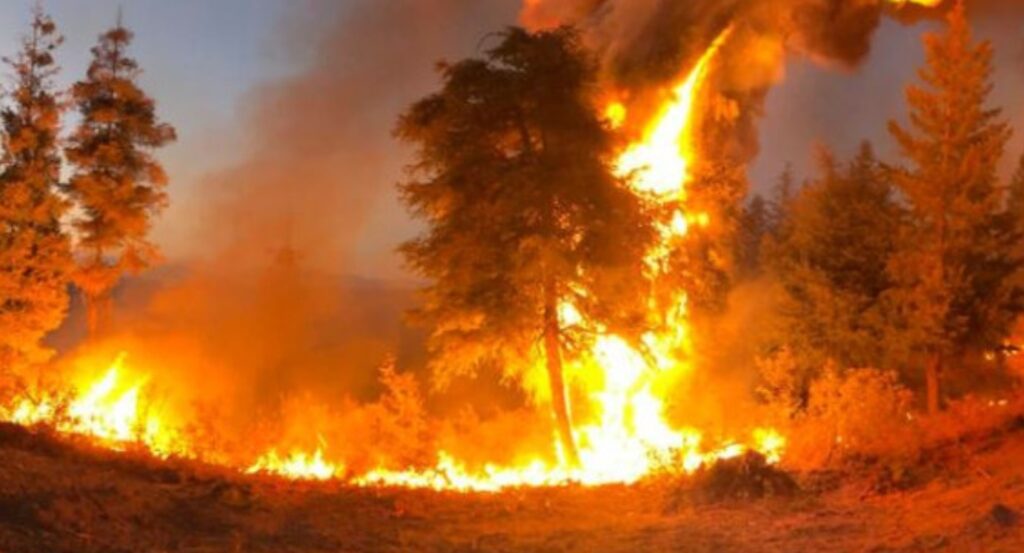The firestorm when December didn’t come
This isn’t fire season. Where I reside, it is the season of sleds and snowballs.
But there they were on a late December day, thousands of residents of the Colorado towns of Superior and Louisville, fleeing as wind-tossed fireballs consumed whole subdivisions.
To everything there is a season — except . . .
“We don’t have a (fire) season any longer,” University of Colorado fire scientist Jennifer Balch told the Denver Post, referring to a stretch that used to end in fall with the first snows. “We are now looking at year-round fires.”
She said this after these horrors befell the two Boulder County communities. They are not remote, pine-dotted mountain towns, by the way. They are suburbs at the cusp of the Great Plains.
It took three or four clock sweeps for a firestorm detonated by winds exceeding 100 mph to lay hundreds of homes to waste, the most destructive fire in Colorado history.
Another horrendous fire in what’s become an alarming game of leapfrog – each new entry becoming the worst ever in intensity and destructiveness.
Even still, what Colorado has experienced pales next to California fires that in 2021 consumed over a million acres.
The sad irony about the fires in Boulder County was that snow, sumptuous and soggy, fell the very next day when 2021 signed off.
So fitting for a December that never came.
More appropriately, it was April without the showers – good golf weather, pleasant, except what nature demands. Confused trees started to bud. Migrant geese scouted for permanent housing. Winter made no appearance at all until a month was exhausted.
These anomalies are happening everywhere. A station on Kodiak Island off Alaska’s coast recorded an unthinkable high of 67 degrees the day after Christmas.
We know what’s happening. We know why. A central reason is because certain political figures have been able to pass on palatable lies that people wanted to hear – namely that this is nothing, certainly nothing to concern them.
In discussing the hurricane-force winds that caused flames to harm so much in Boulder County, a Denver TV meteorologist took a break from the temporal, the day’s temps, to discuss the bigger picture: climate change.
He discussed the carbon loading of our atmosphere. He discussed how carbon molecules cause heat to head back to Earth instead of out into the atmosphere and how dramatically carbon levels have risen in modern times. He discussed how warming had caused droughts, with tinder-dry conditions, and more extreme weather events, like that wind. Extreme droughts and wind events. Extreme tornadoes and hurricanes. The fact is that man-caused carbon-loading increasingly has removed the moderation from our climate.
“This is not political,” he said. “This thermodynamics.”
To which certain viewers no doubt exclaimed, “Liberal media.”
OK. Whatever you want to call science.
In these times, someone who does not acknowledge this science should not be in a position of power. The baseline function of serving the public should be public health and safety and a belief in provable facts.
As dangerous as nature’s tempests prove to be, the danger is greater from charlatans who deny the science of climate and, in the case of a pandemic, basic epidemiology.
On the subject of the climate, not even one of the solutions to carbon loading of the atmosphere has drawbacks over the long haul.
When we turn toward energy conservation and alternatives we relieve pressure on limited supplies of fossil fuels; we reduce air pollution; we reduce energy bills; we produce new jobs and cleaner industries.
Of course, old-energy industries and their proxies in Congress and statehouses will fight anything that shaves at their profit margins.
Hence, when Texas’ power grid went catatonic in 2021, we had Texas Gov. Greg Abbott blaming wind turbines and distracting with “Green New Deal” counter-babble. In fact, the real problem was ill-kept old-energy infrastructure.
How many times will the long-range future of this country and this planet be held hostage to those interested only in short-term profit?
A new year offers a tenuous climate future. The snow that came after the flames offers no cushion.
“The memory of this snow could be short,” said the Colorado fire researcher. “And then we will be at risk again.”
Longtime newspaperman John Young lives in Colorado. Email: jyoungcolumn@gmail.com.

